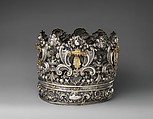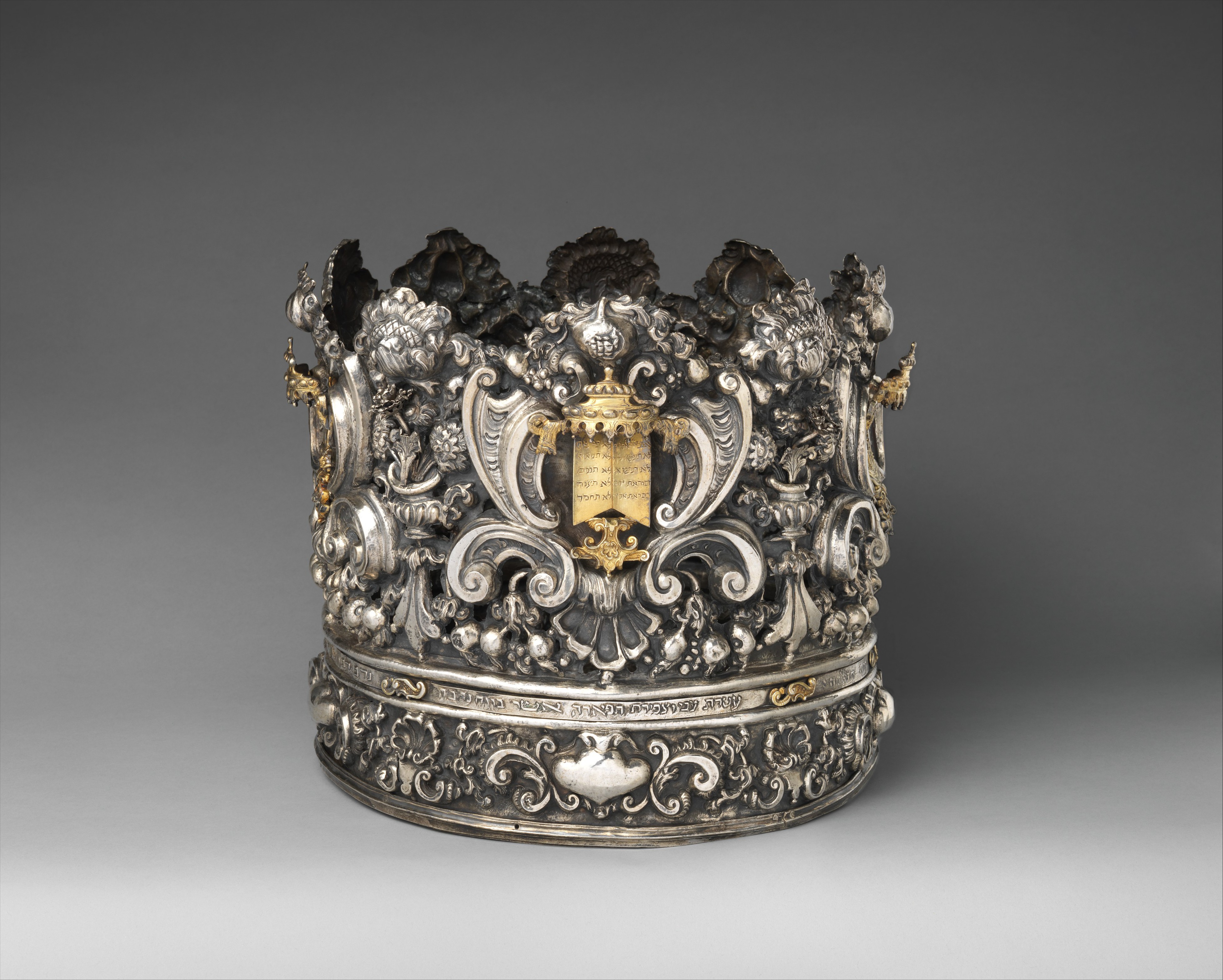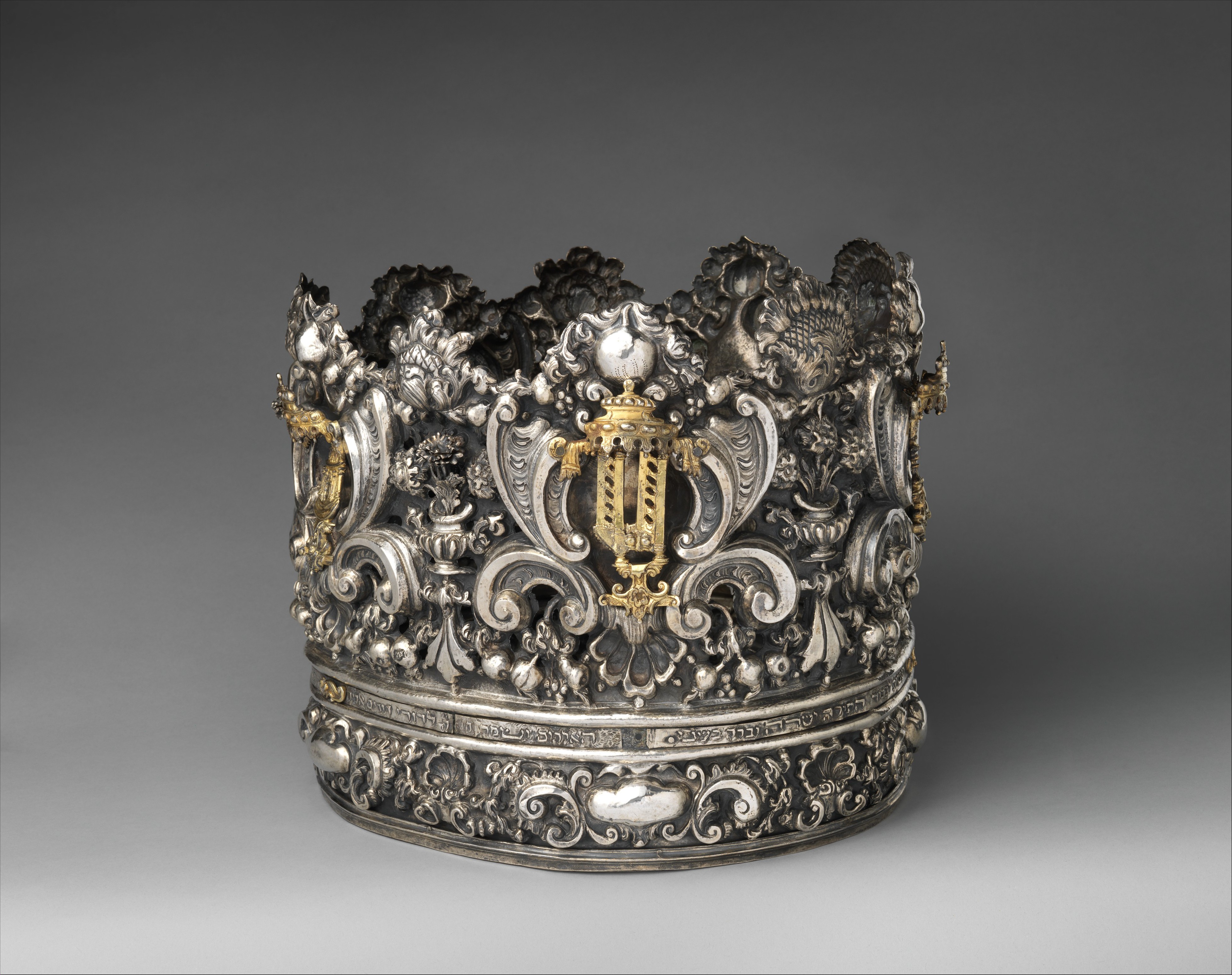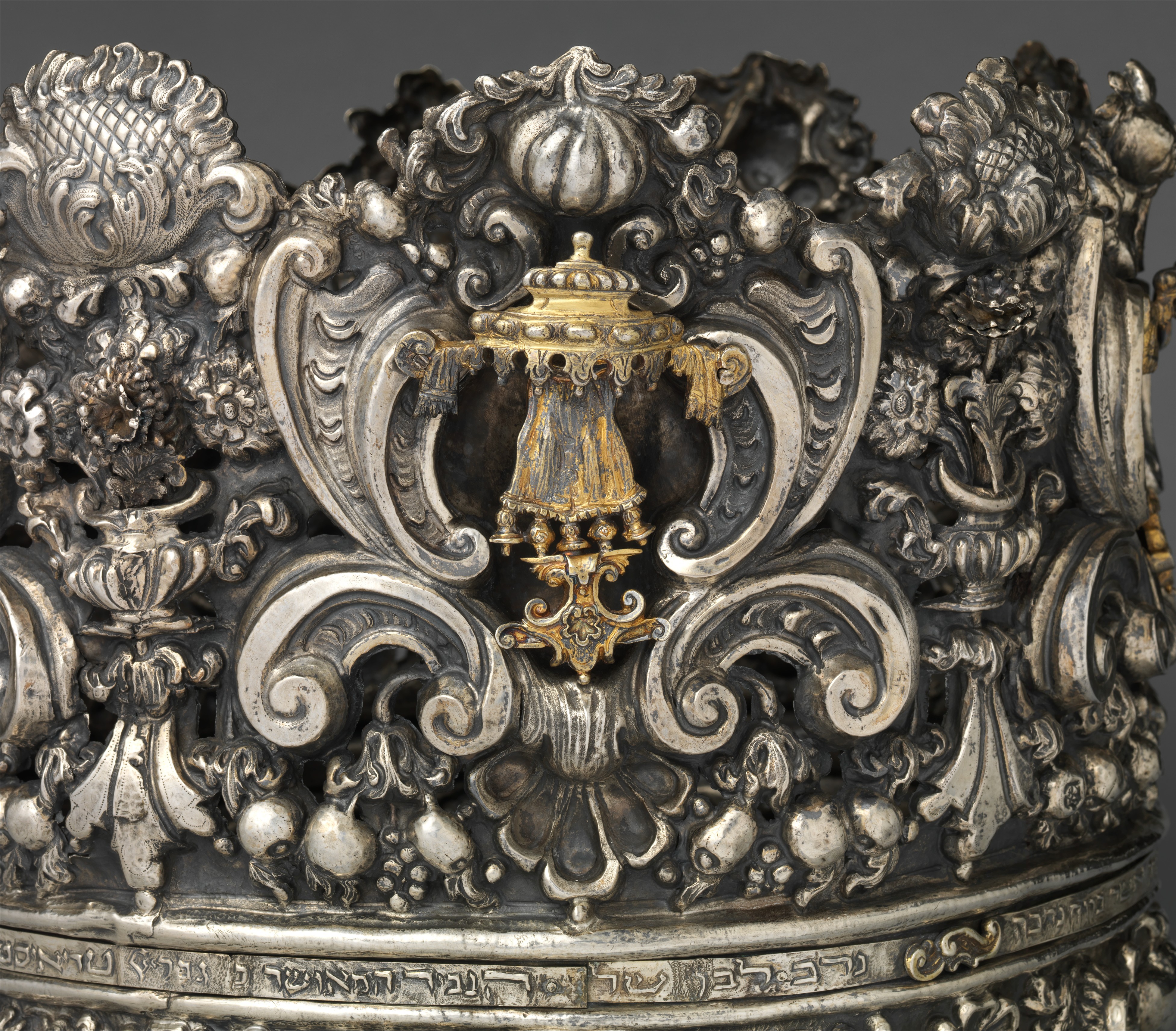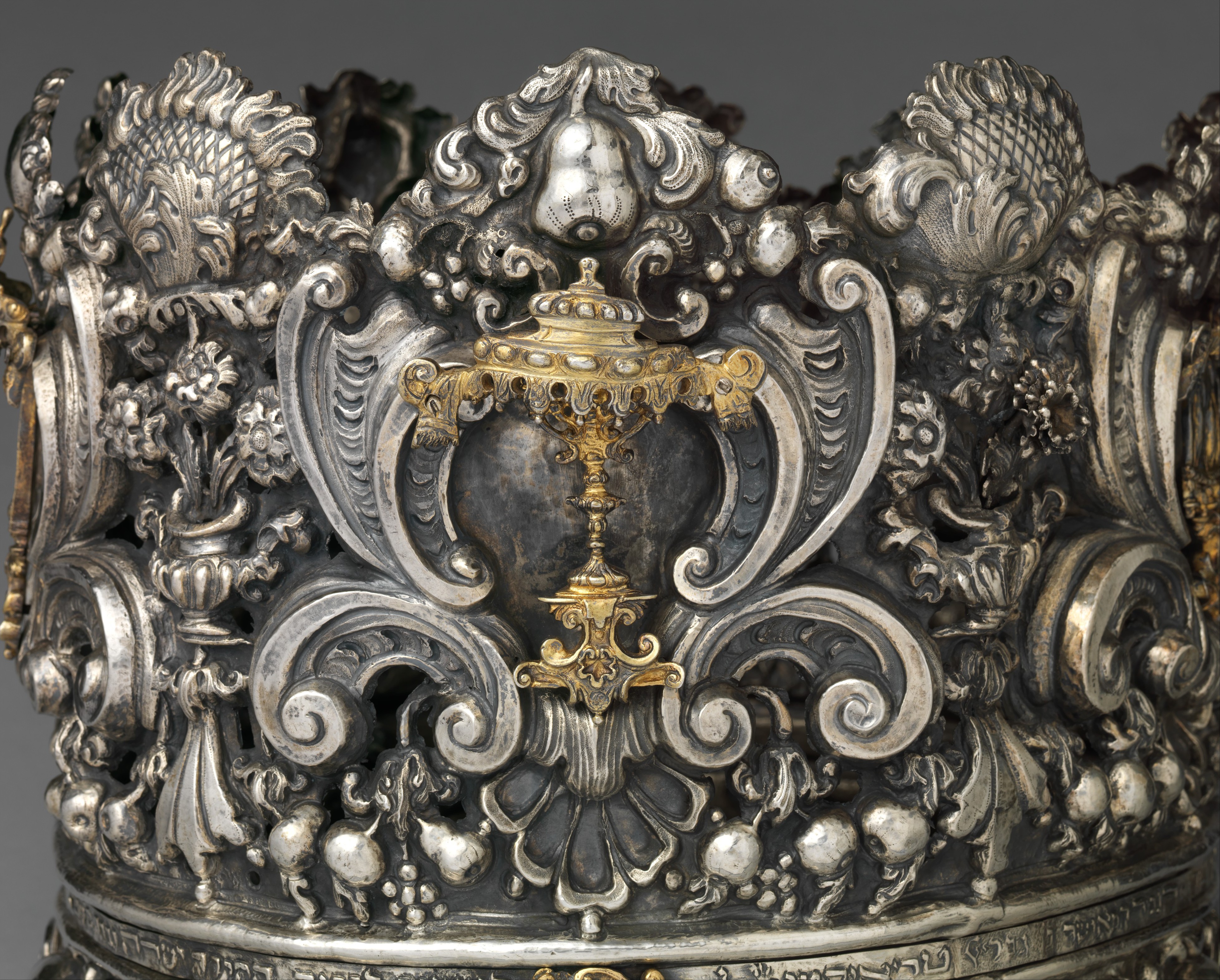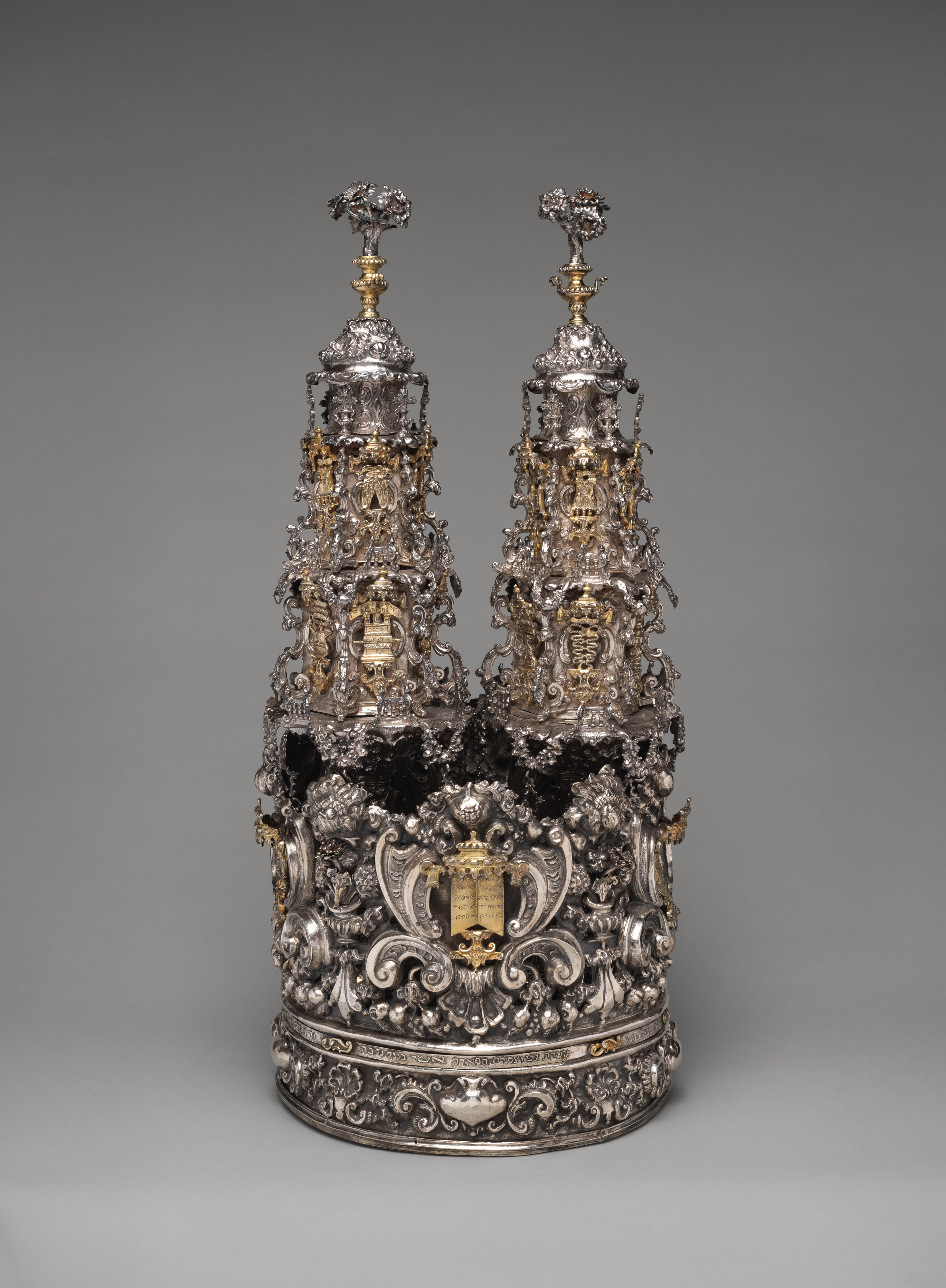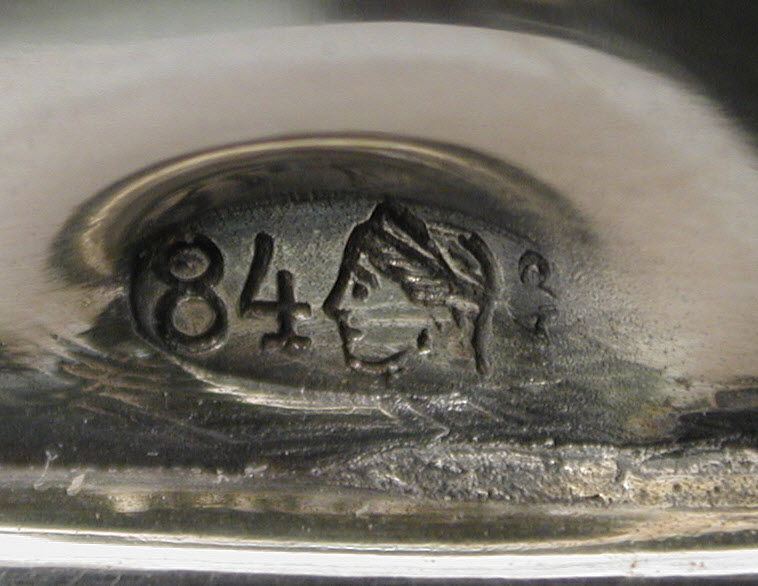Torah crown (keter)
Silversmith Andrea Zambelli "L'Honnesta" Italian
Exceptional for its size and precious material, this Torah crown is a rare survival of 18th-century Italian silver and a testimony to the artistic virtuosity of goldsmithing in Venice. In synagogues the scroll of the Torah, the first five books of the Hebrew Bible, is often decorated with a set of vestments and silver ornaments including a crown or finials, and a shield. The crown augments the Torah’s status as an object associated with royalty and speaks to the centrality of the Torah in Jewish life. The motifs depicted include ritual references such as priestly garments, a miniature temple, a menorah, and the Tablets of the Law, the latter engraved in Hebrew with the Ten Commandments. Such rich embellishment is indicative of the wealth and influential status of the Jewish congregation in the Venetian city state. The maker, Andrea Zambelli, is known to have made a wide range of ritual Judaica as well as religious silver for the local churches. A later inscription in Hebrew documents that this "crown of glory, and diadem of beauty" [Isaiah 28:5], was given by the philanthropist and president of the Jewish community in Padua, Gabriel Trieste, to his congregation in the mid-19th century.
Due to rights restrictions, this image cannot be enlarged, viewed at full screen, or downloaded.
This artwork is meant to be viewed from right to left. Scroll left to view more.
